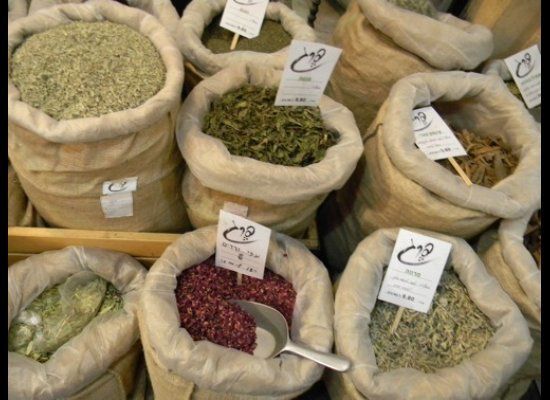Jerusalem is an intensely contentious place. There are tensions between Jews and Muslims, and the divide between secular Israelis and haredim, the ultra-Orthodox Jews. With all the animosity, it can be easy to forget that Jerusalem not merely a cauldron of conflict: This is also a living, breathing city, where normal people do normal things like work, socialize, and shop.
That's why I like the Shuk Machne Yehuda, or Machne Yehuda market. It may not be a hidden gem -- there are plenty of tourists in the shuck - but there are also plenty of locals.
Less than a kilometer from the Old City, Machne Yehuda has hundreds of vendors hawking fish, meat, cheese, candy, spices, baked goods, and produce. There are cafés and restaurants. There's also a store called Kippa Man, in case you need a yarmulke imprinted with Sponge-Bob's face or the Batman logo.
My favorite section is the Iraqi Market. In the afternoons, retirees gather at the social club to smoke, chat, play backgammon, and smoke some more. A few steps away is Azura, an inexpensive restaurant that specializes in the rich cuisine of Middle Eastern Jewry. Try the kubeh, a fist-sized dumpling stuffed with ground beef available in a variety of vegetable soups.
The market has been around in one form or another since the late nineteenth century. In the 1920s, the British arranged its haphazard sprawl into more permanent structures. The most recent renovations were in the early 2000s, when the authorities made improvements to the sanitation and power grid.
The history of the market, unfortunately, is not just about expansion and development. As a gathering place of local Jews, Machne Yehuda was the target of a number of deadly suicide bombings during the Second Intifada.
Thankfully, these days the biggest danger is the crowds. On Thursdays and Fridays, the shuk is packed with observant Jews stocking up for the Sabbath. Visitors should be aware that Israelis have a different sense of personal space. And by "different" I mean "they don't believe in it." That's why I prefer to visit the market in the morning, when it's easier to wander and nosh.
This summer there was good reason to brave the crowds: Every Monday evening in July, Machne Yehuda is transforming into Balabasta, a celebration of local culture.
On two consecutive Mondays, I found Balabasta an outrageously fun mix of visual art, music, dance, and street performance. There were bands on a rooftop stage, site-specific art, buskers, and puppetry. I didn't even mind the clowns and jugglers, if only because they seemed less annoying in Hebrew. Most of the stalls stayed open into the night, which made for a lively combination of culture and commerce.
The best evening was at the Iraqi Market, where friends and I had beers while Rami Danoch, an Israeli singer with an infectious Middle Eastern-style, played a lively set. Meanwhile "Can't Live With or Without You," a video portrait of stall owners was projected onto the side of a building. (Bizi Goldberg, an Israeli artist, has been wandering the market for months, filming and asking questions.) For me, the combination of music, video, booze, and dancing, was the highlight of Balabasta.
I should add that Balabasta is only one part of the Jerusalem Season of Culture, a summer-long series of events in and around the city.
Either way, a visit to the market is highly recommended. Don't skip the holy sites, of course. But you won't regret experiencing a little intensity of a different kind.
Advertisement
